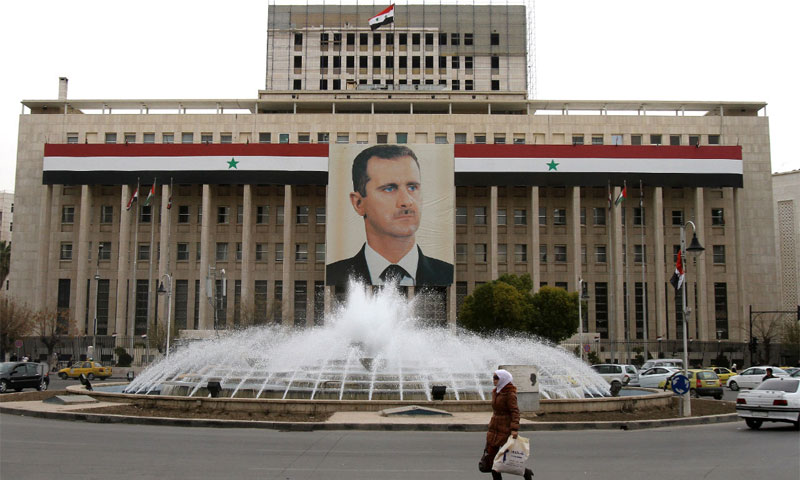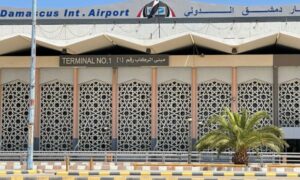
Syria’s 2017 Budget… The Largest in Pounds and Smallest in Dollars

After four days of discussions in the Syrian People’s Council last week, Council members voted to refer the 2017 general budget bill to the Budget and Accounts Committee to examine some points and gaps in the text.
Council members discussed the budget after it was referred to the Council for their suggestions and criticisms by the president of the regime, Bashar al-Assad.
The regime’s Minister of Finance, Mamoun Hamdan, announced that the 2017 general budget will be an estimated 2660 billion Syrian Pounds – an increase of 680 billion Syrian Pounds on the previous year’s budget of 1980 billion Syrian Pounds (a rise of 34.34%).
Hamdan clarified that current expenditure in the 2017 budget, earmarked for buying, sales, imports and credit tax returns on ownership and investment, are estimated at 1982 billion Syrian Pounds. The credit tax returns from investment operations will reach 678 billion Syrian Pounds while 423 billion Syrian Pounds of the budget are assigned to social assistance.
According to the government’s statement on the new budget, government credits serve to revitalize the economy, improve living standards and create job opportunities for citizens. An estimated 56,499 job opportunities will be created in the coming year.
The “Largest” Budget Ever… An Indicator of Real Development?
Syria’s 2017 budget is considered the largest in Syria’s history, but the size of the budget does not indicate economic development, according to economic expert Mohammad Hussam Halmi. Halmi told Enab Baladi, “This does not indicate an actual increase as a result of developing or expanding the Syrian economy, which is now destroyed, but is due to inflating the value of expenditures that resulted from the large increase in prices caused by the collapse of the value of the Syrian Pound to the Dollar.”
Despite the increase in the budget, its real value in comparison with the US dollar based on the exchange rate in the past six years shows that the budget has decreased greatly.
In 2010, the value of the budget was around 750 billion Syrian Pounds, an estimated 16.4 billion US Dollars based on the exchange rate at the time (1 US Dollar for 45.5 Syrian Pounds). In 2011, at the start of the revolution, the value of the budget reached 835 billion Syrian Pounds, around 18.3 billion US Dollars based on the same exchange rate.
If we calculate the value of the budget based on the 2010 exchange rate, the size of the 2017 budget should be 56.5 billion US Dollars. With the continued drop in the value of the Syrian Pound and the deterioration of the price of the dollar in the past few years, the exchange rate has reached 517 Syrian Pounds for 1 US Dollar (according to the central bank exchange rate). Thus, the value of the 2017 budget is 5.1 billion US Dollars only – its lowest in the last ten years.
According to economic researcher Yunus al-Karim, the size of the 2010 budget is greater than that of the current budget. Al-Karim explained that the value of the expenditure announced is three and a half times less than the 2010 budget due to the continued collapse of the Syrian state and its infrastructure.
Al-Karim confirmed that the value of the current budget does not cover the cost of Syria’s imports, which will lead to an economic deficit in the second half of 2017.
Financing the Deficit: Contradictory Statements
The authorities have made contradictory statements underlining the strength of the Syrian state and its institutions and concerning the incoming budget’s ability to fulfil expectations.
Mamoun Hamdoun, the Minister of Finance, said that the general budget bill demonstrated the strength of the Syrian state and its institutions in light of the exceptional circumstances the country is experiencing.
The head of the Budget and Accounts Committee of the People’s Council, Hussein Hassoun, stated that the fact that the government had presented its financial statement for the draft budget within the constitutional period and according to the data and resources available is a major achievement. He argued that it sends a message to those inside and outside Syria that the Syrian economy and state institutions are doing well despite the treacherous and criminal activities they have suffered at the hands of terrorists.
In a statement to the pro-regime Watan newspaper on 31 October, Hassoun confirmed that the budget would fulfill expectations, but in another statement to the same newspaper on 2 November, he admitted that anyone looking at the government financial statement may feel, at first glance, that while a budget of its size does meet needs and expectations, “it has a 27.88% deficit… It carries a financial deficit of an estimated 741.16 billion Syrian Pounds.”
To finance the state budget deficit, the government is borrowing from the banking system (the central bank). Financing the deficit will have dangerous repercussions in the coming year. Since the state will not be able to import, it will resort to austerity, which will lead to a continued rise in prices and an increase in inflation, according to al-Karim.
Al-Karim told Enab Baladi that Syrian citizens will fall prey to “the merchants of war” who supply basic goods not available on the market using special methods and setting the prices they choose, causing the Syrian Pound to collapse further and aggravating the suffering of Syrian citizens.
As the Syrian regime continues to give different excuses for the economic situation, such as the economic sanctions on Syria or the fall in imports, the gap between the rich and the poor increases and the proportion of citizens living under the poverty line increases. Recent economic studies show that around 85% of Syrians are living below the poverty line.
| Year | Budget Value in Syrian Pounds | Budget Value in US Dollars | Exchange Rate |
| 2010 | 750 billion | 16.4 billion | 45.5 Syrian Pounds |
| 2011 | 835 billion | 18.3 billion | 45.5 Syrian Pounds |
| 2012 | 1326 billion | 24.1 billion | 55 Syrian Pounds |
| 2013 | 1383 billion | 20.4 billion | 67.5 Syrian Pounds |
| 2014 | 1390 billion | 9.9 billion | 140 Syrian Pounds |
| 2015 | 1554 billion | 15.36 billion | 150 Syrian Pounds |
| 2016 | 1980 billion | 7.9 billion | 250 Syrian Pounds |
| 2017 | 2660 billion | 5.1 billion | 517 Syrian Pounds |
if you think the article contain wrong information or you have additional details Send Correction
النسخة العربية من المقال
-
Follow us :

















 A
A
A
A
A
A








 More Economy
More Economy